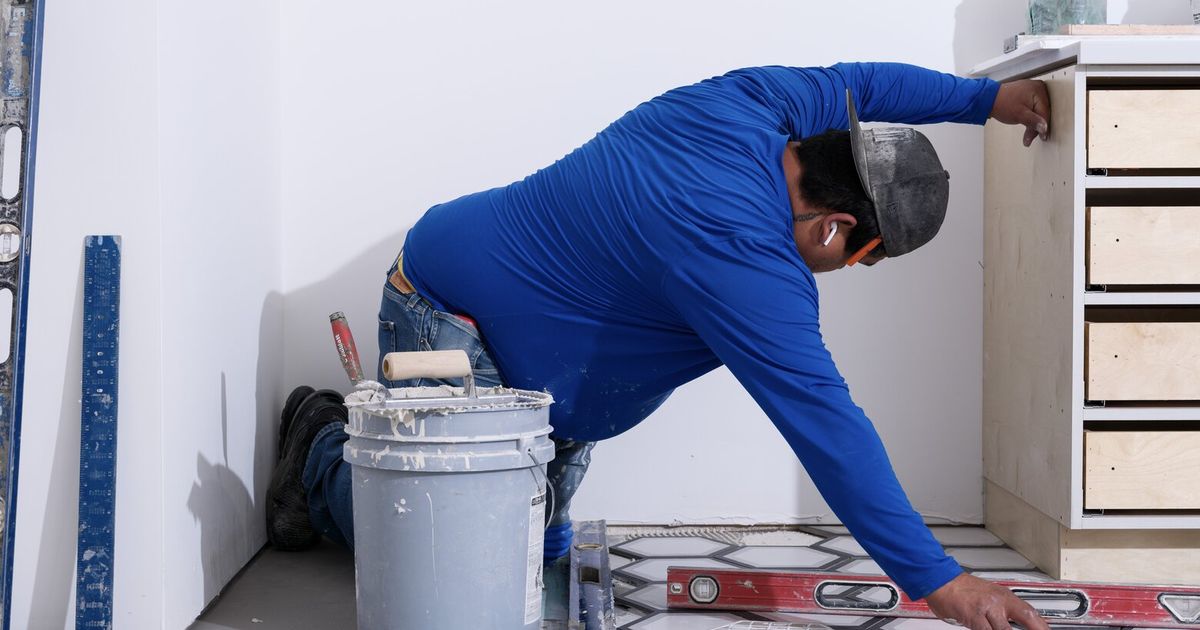Charles Mudede was at the Post Pike Bar in Seattle in November, nursing a glass of white wine and having a heated discussion about a topic he felt strongly about: the state of new development in the city.
Last year, residential construction in Seattle hit a record high, with over 13,000 units built, according to data from Seattle in Progress, an organization that tracks construction. Mudede, 53, who has lived in the city for 30 years and has long written for The Stranger alt-weekly newspaper, was expressing his distaste for some of those “architectural abominations.”
“What’s that new building?” he asked the bartender. “It’s an apartment building, but they put some bright blue, splashy thing on its facade.”
“The Motorworks building?” the bartender responded, referring to the luxury apartments a few blocks from the bar.
“No, no.”
“It’s the one with the juice bar on the bottom floor, right?” another person sitting at the bar asked.
“No, not that one.”
The guessing game went on for a few more minutes, with other patrons chiming in, until Mudede, a filmmaker and lecturer at the Cornish College of the Arts, sighed and said, “Nobody can tell because they all look the same.”
In 2022, an estimated 420,000 new rental apartments were built in the United States, the highest amount for new multifamily construction in a half-century, according to the latest data from RentCafe, an apartment search platform.
The new developments look startlingly alike, often in the form of boxy, midrise buildings with ground-floor retail space, sans-serif fonts and vivid slabs of bright paneling. The bulky design is conspicuous, jutting out of downtown streets and overpowering its surroundings. Over time, it attracts a certain ecosystem: craft breweries, boutique coffee shops, out-of-town young professionals.
It’s anytown architecture, and it’s hard to know where you are from one city to the next.
This is not the first time that a single building style has been widely adopted and derided. Take the monotony of American suburbs, or trailer parks, which took off in the 20th century as low-income housing but were criticized for their cookie-cutter nature.
Yet advocates for multifamily housing say that there are times when design has to take a back seat to necessity, and that an affordability crisis, exacerbated by inflation and brutally low housing inventory, is one of those times. The current construction has been “driven by pent-up demand for apartments nationwide, especially as some renters postpone their dream to become homeowners,” according to the RentCafe report.
As developers scramble to build, The New York Times visited three places — Denver, Seattle and Nashville, Tennessee — in search of sameness and what it means. Are American cities destined to lose their unique charm? In the current housing crisis, does that matter?
Municipal reviews and cheap materials
In Seattle, most new private development projects must undergo a design review process. The city has eight design review boards, each for a different geographic district, and all are made up of volunteers. The boards are tasked with determining if a proposed project fits city and neighborhood design guidelines, which cover aspects such as outward appearance, vehicular access and landscaping.
The waterfront Ballard neighborhood of Seattle, once a hub for Nordic immigrants, is now a trendy destination with record shops, bars and restaurants. Complexes with roughly five wood-frame stories atop one concrete podium — known as 5-over-1s — dominate consecutive blocks.
The design guidelines, adopted by the City Council in 2001 and last revised in 2019, encourage “bold colors and volumes similar to those expressed in the Ballard Library and Greenfire buildings,” which house apartments, office space and a restaurant. It’s a process that has drawn criticism — and one that is partially responsible for the homogenization of architecture across a city once known for its Northwest Regional style of architecture, defined by unpainted wood, flat roofs and lots of glass.
“The design review process sometimes contributes to some of the things that people don’t like,” said Newton Breiter, creative director of Lake Union Partners, a real estate development company based in Seattle that has worked on many 5-over-1s.
The review board members “want to see that a project isn’t just one big mass, so they say, ‘I want you to modulate the building. I want you to make it look different,’” Breiter said. “So you end up with all these different materials, and it drives the addition of bright colors.”
Architects are also often working under budgetary constraints and density requests from developers, who don’t want to lose money on their investments. And wood-frame construction, which makes up the bulk of these buildings, is typically less expensive than concrete or steel.
Higher construction costs would require higher rents “in order to make the project financially feasible for an investor and a bank,” Breiter said.
Davi Parker-Garcia, a principal at Seattle-based architecture firm Weinstein A+U, said there is “pressure to squeeze as many units as you can.” Almost a decade ago, the typical one-bedroom unit that the firm would work on was around 730 square feet. Now the expectation is that it should be in the 600s, she said.
Rather than change the type of building, she said her focus is pushing the boundaries of what can be done within the template, like making the windows bigger.
“We are often forced to work with bottom-of-the-barrel materials,” Parker-Garcia said.
“Lego structures”
Colloquially, people have referred to 5-over-1s as “gentrification buildings” or “fast-casual architecture.” Not all of them are built the same, however. Some are permanent affordable-housing communities, while others hawk luxury urban living. Still, for many people, 5-over-1s have come to symbolize, in tangible form, the most painful aspects of today’s housing crisis: They are stand-ins for gentrification, corporate landlords and excessively high rents.
That’s in part why they’re so hated.
“I think they’re terrible,” Zereseni Selemun, 50, a Lyft driver, said as he was passing through Ballard. “It’s very ugly. Very ugly. I hate it!”
In 2015, artist Brad Evans created the private Facebook group “Denver FUGLY” to express his frustration over the city’s new uninspired development.
The group now has nearly 10,000 members and does not mince words: “Let’s get after it at the core of what needs to be exposed and work to stop the stupid, the lazy and the pathetic execution of bad ideas,” the page summary reads.
“The people behind these Lego structures don’t care. They’ve never been here, nor will they come here,” Evans, 56, said in an interview.
Driving around the Jefferson Park neighborhood of Denver, Evans pointed out the missed opportunities for public green space and the random fake-brick facades tacked on to buildings.
One block of Jefferson Park that was designated as a historic district in 2019 remains almost pristinely preserved. Lined with ornate Queen Anne-style and terraced homes, the street feels like a step back in time. That is, until one reaches the end of the block.
Part of the issue, critics say, is that a handful of real estate developers manage a disproportionate share of new projects across the country.
In 2021, five of the 25 largest developers were responsible for starting construction on nearly 47,000 units in the U.S. — about 40% of the output of the whole group, according to data from the National Multifamily Housing Council.
Greystar Real Estate Partners — which started over 14,000 of those units, the greatest share on the list — more than quadrupled its output from 2014. The company, which manages over 700,000 units in the country, is based in Charleston, South Carolina, but owns developments in New York City; Houston; and Tampa, Florida, among other cities.
Bob Faith, CEO of Greystar, echoing the sentiments of other developers, said that for the most part the style of its buildings is “driven by the planning regulations in any city.”
“I don’t want to say it’s like color-by-numbers, but in some cities, it’s color-by-numbers,” Faith said. He said Greystar makes an effort to differentiate its projects by adding “flash” to exteriors with different materials or shapes.
Perhaps what bothers some Denver residents the most is what the new architecture signals: In 2005, more than 80% of Jefferson Park residents were Latino, and more than 50% were foreign-born, according to a city report at the time. In recent years, Denver’s growing technology and cannabis industries have drawn many coastal transplants to the region, changing the demographics, and style, of the neighborhood.
“They’re like Denny’s,” Evans said of the new buildings. “You could be at a Denny’s in Iowa or New Mexico or Colorado, and you wouldn’t know. You just know that you’re at a Denny’s.”
Dingbats and brownstones once maligned
Will we one day look back on the current architecture and feel nostalgia for design once mocked? History suggests yes.
Dingbat apartments — two- to three-story buildings, often painted in pastel colors and emblazoned with catchy names in script fonts, with a ground-level open parking area — became pervasive throughout the Sun Belt in the 1950s and ’60s, for reasons similar to today’s.
“They were initially really maligned as the crystallization of pure real estate rationale with architecture that was just tacked on,” said Liz Falletta, an architect and professor of planning and urban design at the University of Southern California. “But we built enough of them so that you could rent them for an affordable price. And now they’re being celebrated for their midcentury modern design, and there’s a lot of nostalgia for them.”
Brownstones, which now sell for millions in New York City, were also hated in their heyday.
“While they would later be viewed as authentic, contemporaries dismissed brownstones as modern and artificial,” Suleiman Osman, a professor of American studies at George Washington University, wrote in his book “The Invention of Brownstone Brooklyn.”
“When one has seen one house, he has seen them all,” one critic, quoted in Osman’s book, wrote about brownstones in the 1800s.
As with brownstones and dingbats, distaste can dissolve with time.
“A lot of people’s lives will have been lived in them 20, 30, 40 years from now. In their role as housing and much-needed housing, people might look back on them more positively,” Falletta said of today’s buildings. “They may not be valorized as good design, but people’s attitudes will change.”
At the end of 2020, the nation was short 3.8 million units of housing, according to Freddie Mac. Multifamily buildings, despite their aesthetic shortcomings, can close that gap far quicker and cheaper than, say, brownstones or bungalows.
Critics agree that more housing is positive, but they also say that the current construction misses an opportunity.
“Getting housing built is more important than nitpicking over aesthetics,” said Kate Wagner, an architecture critic and the creator of the “McMansion Hell” blog, “but there is definitely room within the housing to improve aesthetics.”
Mudede, the Seattle resident, said he isn’t against construction, “but cities should be inspiring. Living in them can and should feel like a work of art, and that’s what’s sad for me.”
Changes in Nashville
At one time, the 12 South neighborhood of Nashville was home to a number of Black churches, modest spaces that were integral to the culture of the neighborhood. But as new development increased and prices rose over the past few years, church members were forced to move out of the area. Many of those churches saw no choice but to leave as well.
“The people we used to serve were uprooted from the neighborhood,” said Calvin C. Barlow Jr., a bishop at Second Missionary Baptist Church. In 2021, the church sold its properties, including a garden and a parking lot, to a developer for $3.5 million and moved to the outskirts of the city.
In the neighborhood today, one can find stylish restaurants and boutiques — including Draper James, the clothing shop founded by actress Reese Witherspoon — and those contemporary apartment buildings that many people loathe.
“The city loses when people are pushed out. It loses knowledge, it loses ideas, it loses vision,” Barlow, 72, said. His church used to run a computer lab to teach children technology skills after school. “Those kids don’t have that after-school care now.”
In north Nashville, some new development serves a different purpose.
In the ZIP code of 37208 — which has the highest incarceration rate in the country and a high poverty rate, attributed to systemic racism — there is a new midrise apartment development with nearly 150 units. The buildings, which opened to residents in 2017, have green and orange detailing, and one has a Chase Bank on the ground floor. It’s what many people might call a “gentrification building,” but it’s far from that.
The mixed-use complex is run by the nonprofit Urban Housing Solutions. That it looks like new development in wealthier neighborhoods is intentional, said Alan Mazer, the organization’s general counsel.
“Why should affordable housing look any different from other housing?” he asked.
One of the struggles of getting housing built for households with lower incomes, Mazer said, is the approval process.
“A building has to have a certain amount of visual appeal in order for us to get into certain neighborhoods,” he said. To obtain a building permit, he added, “you have to convince your neighbors that you’re not going to bring down the neighborhood.”
The easiest route to appeasing those concerns is giving people what they’re accustomed to. Today that often means boxy, midrise buildings.
Nearly three years ago, Rosalie Holder, 71, moved into the Urban Housing Solutions development from an adjacent neighborhood, after several close encounters with street violence compelled her to search for a new home.
Holder is grateful for paying $240 a month, far below market rate. She said her neighbors are friendly and the area feels peaceful. The aesthetics of the building were the last thing on her mind, if they were on it at all.
“Here, I feel secure. I feel safe. I don’t hear gunshots. I can walk to the store,” Holder said. “I didn’t think I could find a place like this.”
















